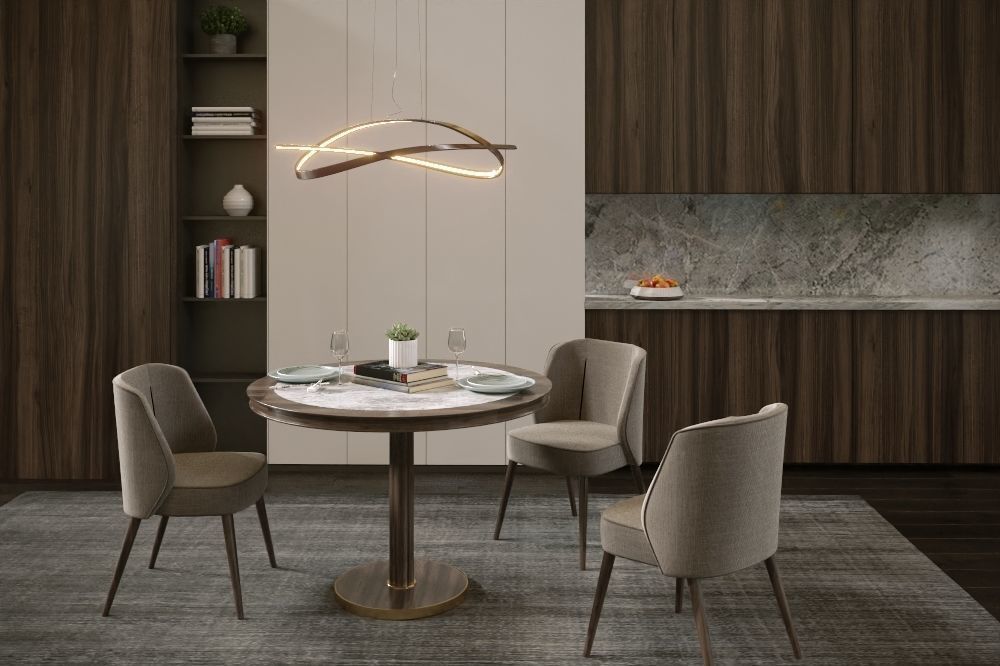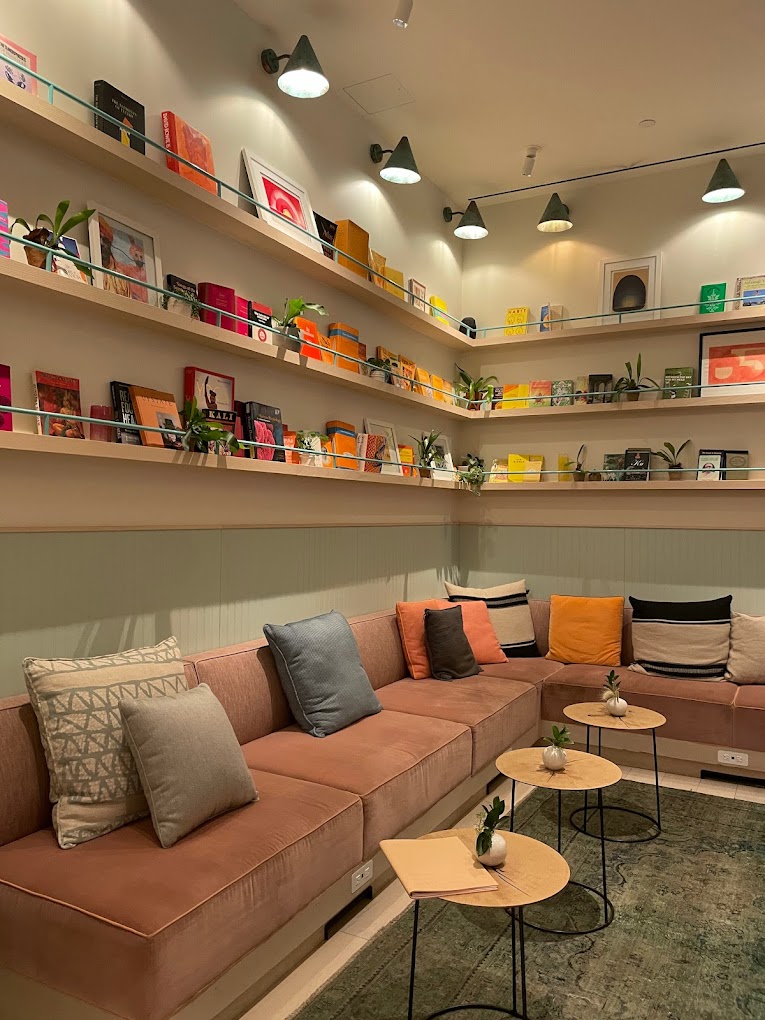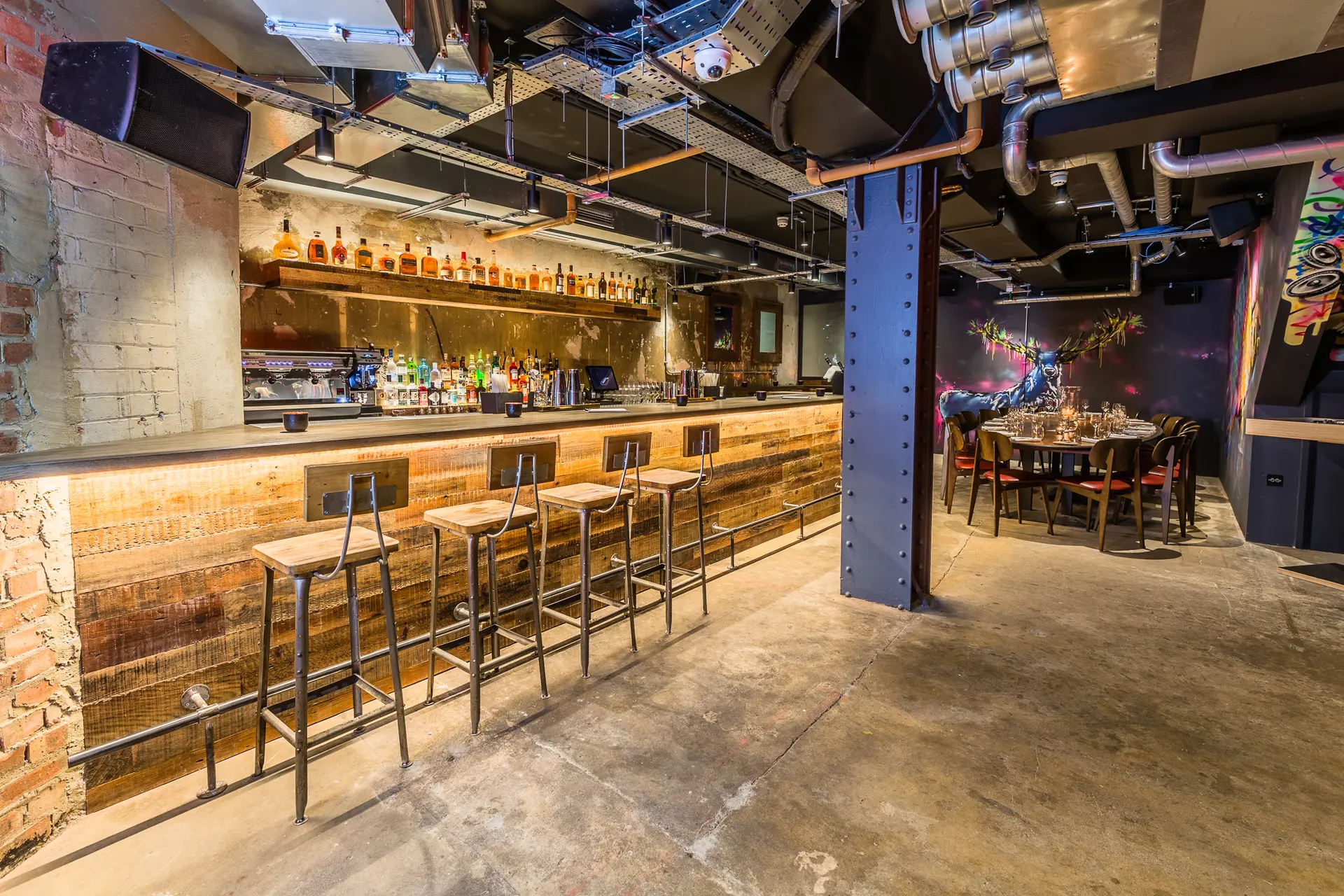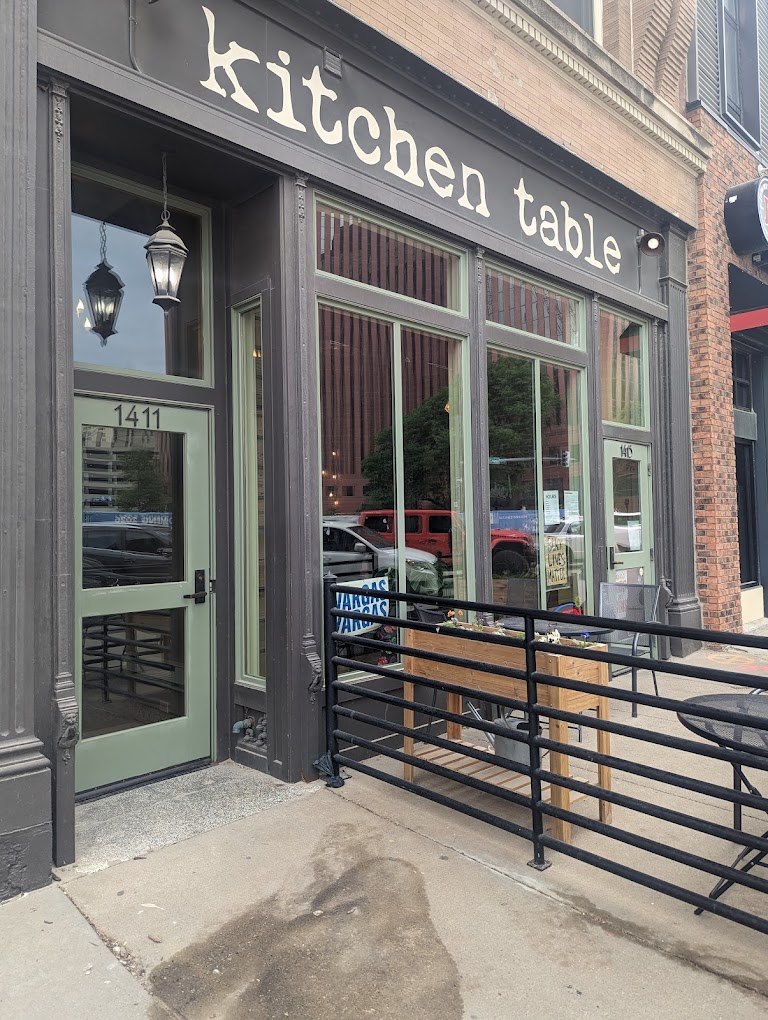Dining tables are crafted from a diverse range of materials, each with their own aesthetic qualities, functional properties, and considerations. Here we outline the characteristics of the most popular dining table materials to help guide your selection.
Wood
Wood is the classic choice for dining tables and blends beauty, durability and warmth.
- Popular woods: Oak, walnut, maple, mahogany, teak
- Benefits: Stainable, repairable, ages beautifully
- Considerations: Vulnerable to scratches, watermarks, and heat damage
Opt for solid wood over veneers for longevity and quality. Examine the grain patterns when selecting.

Glass
Glass dining tables have a light, airy and modern appearance.
- Popular types: Clear, tinted, frosted, tempered, beveled
- Benefits: Sleek, easy to clean, transparent
- Considerations: Fragile, shows smudges, needs frequent polishing
Tempered glass is very strong and resists breakage. Choose thick, heavy glass for dining use.

Stone
Natural stone conveys elegance and sophistication.
- Popular stones: Marble, granite, quartzite, soapstone
- Benefits: Shows unique natural patterns, heat-resistant
- Considerations: Very heavy, can stain, seals required
Soapstone is more scratch and stain-resistant than other natural stones.
Metal
From sleek stainless steel to rustic wrought iron, metal tables boast contemporary cool.
- Popular metals: Stainless steel, aluminum, wrought iron
- Benefits: Durable, heat-resistant, easy to clean
- Considerations: May dent, prone to scratches, can be noisy
Protect softer metals like copper or brass from abrasions and tarnish.
Engineered Wood
Engineered wood products allow for large, seamless tabletops.
- Types: Plywood, MDF, particle board, hardwood veneers
- Benefits: Very consistent, affordable, easily customizable
- Considerations: Quality varies, tends to show wear over time
Look for furniture-grade plywood with multiple veneers for greatest durability.
Laminates
High-pressure laminates create tabletops in unlimited colors and patterns.
- Popular laminates: Formica, Wilsonart, Nevamar
- Benefits: Durable, stain-proof, easy to clean
- Considerations: Can bubble or peel over time, not easily repairable
Choose thicker laminates for longevity, at least 1/16″ for dining tables.
Resin
Seamless resin tabletops emulate the look of natural materials.
- Types: Polyester, epoxy, acrylic resins
- Benefits: Highly durable, weatherproof, mold-resistant
- Considerations: Very heavy, can scratch or cloud over time
Use coasters and placemats to protect resin’s vulnerable surface.
Tile
Ceramic, porcelain or natural stone tiles create customizable tables.
- Popular tiles: Ceramic, porcelain, marble, granite
- Benefits: Durable, heat proof, easy to clean
- Considerations: Grout may stain, uneven surface
Select small mosaic tiles for smoother finishes. Use moisture-proof backing.
Factors to Consider
When selecting a dining table material, consider:
- Intended usage and lifestyle
- Desired aesthetic – traditional, modern, rustic?
- Durability and stain resistance needs
- Weight and mobility
- Noise – some materials clatter more than others
- Ease of repairs and refurbishment
- Sustainability and ethical sourcing
Carefully evaluate both the benefits and potential drawbacks of each material to choose the right dining table for your home, needs and style.










